Hyundai Tucson vs Tesla Model 3 - Differences and prices compared
Compare performance (288 HP vs 460 HP), boot space and price (20900 £ vs 34300 £) at a glance. Find out which car is the better choice for you – Hyundai Tucson or Tesla Model 3?
Costs and Efficiency:
When it comes to price and running costs, the biggest differences usually appear. This is often where you see which car fits your budget better in the long run.
Hyundai Tucson has a significantly advantage in terms of price – it starts at 20900 £, while the Tesla Model 3 costs 34300 £. That’s a price difference of around 13380 £.
As for range, the Tesla Model 3 performs convincingly better – achieving up to 750 km, about 680 km more than the Hyundai Tucson.
Engine and Performance:
Power, torque and acceleration are the classic benchmarks for car enthusiasts – and here, some clear differences start to show.
When it comes to engine power, the Tesla Model 3 has a evident edge – offering 460 HP compared to 288 HP. That’s roughly 172 HP more horsepower.
In acceleration from 0 to 100 km/h, the Tesla Model 3 is significantly quicker – completing the sprint in 3.10 s, while the Hyundai Tucson takes 7.50 s. That’s about 4.40 s faster.
In terms of top speed, the Tesla Model 3 performs evident better – reaching 262 km/h, while the Hyundai Tucson tops out at 204 km/h. The difference is around 58 km/h.
There’s also a difference in torque: Tesla Model 3 pulls significantly stronger with 660 Nm compared to 379 Nm. That’s about 281 Nm difference.
Space and Everyday Use:
Cabin size, boot volume and payload all play a role in everyday practicality. Here, comfort and flexibility make the difference.
Both vehicles offer seating for 5 people.
In curb weight, Hyundai Tucson is a bit lighter – 1542 kg compared to 1822 kg. The difference is around 280 kg.
In terms of boot space, the Hyundai Tucson offers slight more room – 620 L compared to 594 L. That’s a difference of about 26 L.
When it comes to payload, Hyundai Tucson clearly perceptible takes the win – 545 kg compared to 333 kg. That’s a difference of about 212 kg.
Who wins the race?
The Tesla Model 3 proves to be dominates this comparison and therefore becomes our DriveDuel Champion!
Tesla Model 3 is the better all-rounder in this comparison.
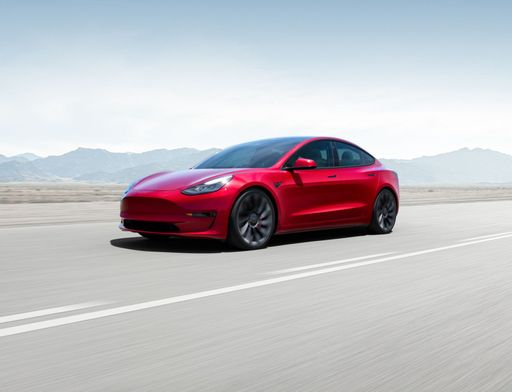
Tesla Model 3
Costs and Consumption
View detailed analysis
Engine and Performance
View detailed analysis
Dimensions and Body
View detailed analysis
Hyundai Tucson
Hyundai Tucson marries bold, sculpted looks with a clever, roomy cabin that feels smarter than its price tag suggests. It's composed on the road, easy to live with day-to-day, and a sensible choice for buyers who want SUV style without the showroom theatrics.
details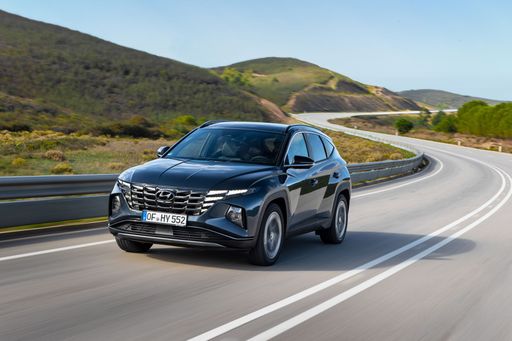

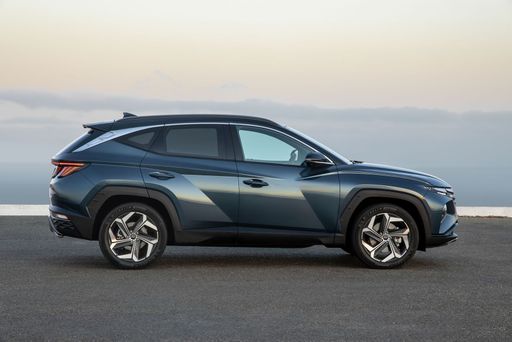
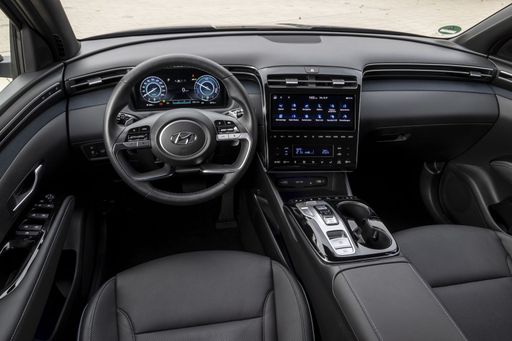
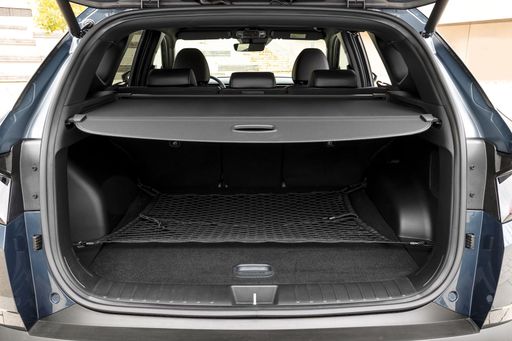
Tesla Model 3
The Tesla Model 3 slices through daily commuting with a silent, confident shove that makes petrolheads reassess their life choices, while its minimalist cabin feels more like a slick gadget gallery than a traditional car interior. For buyers after a fuss-free, tech-forward electric with plenty of grin factor and low running drama, it’s hard to beat—just don't be surprised when the car updates itself overnight.
details



Costs and Consumption |
|
|---|---|
|
Price
20900 - 47900 £
|
Price
34300 - 50100 £
|
|
Consumption L/100km
2.7 - 7.6 L
|
Consumption L/100km
-
|
|
Consumption kWh/100km
-
|
Consumption kWh/100km
13.2 - 16.7 kWh
|
|
Electric Range
63 - 70 km
|
Electric Range
550 - 750 km
|
|
Battery Capacity
-
|
Battery Capacity
64.5 - 83 kWh
|
|
co2
62 - 172 g/km
|
co2
0 g/km
|
|
Fuel tank capacity
52 - 54 L
|
Fuel tank capacity
-
|
Dimensions and Body |
|
|---|---|
|
Body Type
SUV
|
Body Type
Sedan
|
|
Seats
5
|
Seats
5
|
|
Doors
5
|
Doors
4
|
|
Curb weight
1542 - 1893 kg
|
Curb weight
1822 - 1929 kg
|
|
Trunk capacity
546 - 620 L
|
Trunk capacity
594 L
|
|
Length
4525 - 4535 mm
|
Length
4720 - 4724 mm
|
|
Width
1865 mm
|
Width
1850 mm
|
|
Height
1650 mm
|
Height
1431 - 1440 mm
|
|
Max trunk capacity
1795 - 1799 L
|
Max trunk capacity
-
|
|
Payload
518 - 545 kg
|
Payload
303 - 333 kg
|
Engine and Performance |
|
|---|---|
|
Engine Type
Petrol, Full Hybrid, Plugin Hybrid, Diesel MHEV
|
Engine Type
Electric
|
|
Transmission
Manuel, Automatic
|
Transmission
Automatic
|
|
Transmission Detail
Manual Gearbox, Dual-Clutch Automatic, Automatic Gearbox
|
Transmission Detail
Reduction Gearbox
|
|
Drive Type
Front-Wheel Drive, All-Wheel Drive
|
Drive Type
Rear-Wheel Drive, All-Wheel Drive
|
|
Power HP
136 - 288 HP
|
Power HP
283 - 460 HP
|
|
Acceleration 0-100km/h
7.5 - 11.6 s
|
Acceleration 0-100km/h
3.1 - 6.1 s
|
|
Max Speed
196 - 204 km/h
|
Max Speed
201 - 262 km/h
|
|
Torque
250 - 379 Nm
|
Torque
420 - 660 Nm
|
|
Number of Cylinders
4
|
Number of Cylinders
-
|
|
Power kW
100 - 212 kW
|
Power kW
208 - 338 kW
|
|
Engine capacity
1598 cm3
|
Engine capacity
-
|
General |
|
|---|---|
|
Model Year
2025
|
Model Year
2025
|
|
CO2 Efficiency Class
F, D, E, B
|
CO2 Efficiency Class
A
|
|
Brand
Hyundai
|
Brand
Tesla
|
What drive types are available for the Hyundai Tucson?
Available configurations include Front-Wheel Drive or All-Wheel Drive.
The prices and data displayed are estimates based on German list prices and may vary by country. This information is not legally binding.




